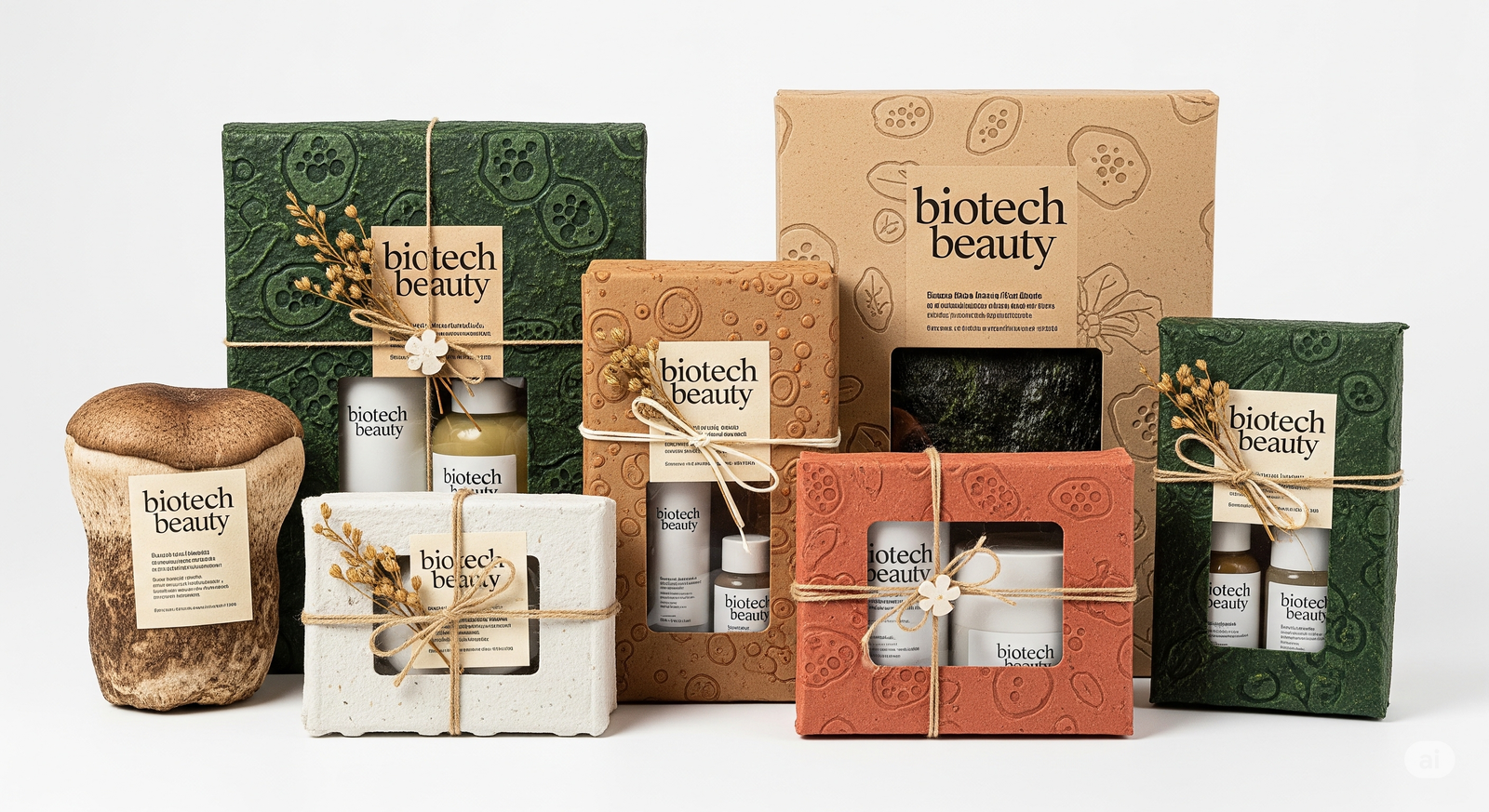Biotech Beauty: The Science Behind Festival-Ready Sustainability
Explore how biotech beauty is redefining festivals in 2025. From lab-grown ingredients to sustainable skincare, Admigos tracks trends driving eco innovation.
24 Jul'25
By Niharika Paswan


Biotech Beauty: The Science Behind Festival-Ready Sustainability
For years, festival beauty has leaned on glitter, glow, and long-wear everything. But in 2025, that aesthetic is getting a science-forward upgrade. Consumers are no longer satisfied with makeup that lasts all night. They want skincare-infused formulas that protect, repair, and align with climate goals.
Biotech beauty: an innovation wave transforming how products are formulated, sourced, and delivered. From lab-grown actives to microbe-derived pigments, sustainable skincare biotech is no longer niche. It's center stage. And for festival-goers who want to express more and waste less, it’s arriving just in time.
The Biotech Boom in Festival Skincare

According to Mintel’s 2023 Global Beauty and Personal Care Trends report, the next frontier of clean beauty is proven sustainability not just natural-sounding ingredients but tech-backed sourcing methods. That’s where biotech leads. Biotech beauty uses lab-grown ingredients, enzymes, or microorganisms to replace traditional botanical or synthetic sources. It’s not only more consistent and scalable, but drastically reduces environmental impact.
This is especially crucial for festival-friendly products. The demand is clear:
- Longwear products that don’t clog pores in heat
- Skin-supportive formulas for sun and pollution exposure
- On-the-go packaging that doesn’t trash the planet
With festivals across Europe and Asia ramping up after pandemic-era slowdowns, brands are taking note. Biotech solutions are becoming the backbone of 2025’s “clean and conscious” product lines.
From Fermented Extracts to Bioengineered SPF: What’s Actually Inside

What does biotech beauty look like on a label? More common than you’d think. Here are some real-world innovations shaping festival skincare this year:
1. Squalane from Sugarcane
Sourced by brands like Biossance and The Ordinary, biotech-derived squalane mimics skin’s natural lipids without relying on shark liver or olive oil extraction. It provides hydration without heaviness ideal for sweaty, dehydrated skin at outdoor events.
2. Lab-Grown Vitamin C
Traditional Vitamin C oxidizes quickly. Biotech labs like Arcaea and Codex Labs are engineering stabilized versions that last longer, even in heat. These are appearing in antioxidant mists and lightweight gel serums made for on-the-go refreshment.
3. Fermented SPF Boosters
Companies such as Solesence are using biotech to create UV-protective ingredients with better skin compatibility and lower white cast. These are being layered into “invisible shield” SPF serums and tinted sunscreen sticks targeting the festival crowd.
4. Biodesigned Fragrance
Modern Meadow and Ginkgo Bioworks are pushing forward with bioengineered aroma compounds that reduce the need for synthetic fixatives or endangered natural extracts ideal for perfume oils and setting sprays that align with eco-conscious values.
These ingredients aren’t just gentler on skin. They reduce land use, water waste, and carbon emissions a major plus in an era of climate-aware consumers. You can explore blogs under the Beauty Intel section on THRVE that unpack what truly defines a clean formula from ingredient sourcing to safety standards and beyond.
Why Biotech Resonates with Gen Z Festival Culture
Festival beauty isn’t just about bold color and shimmer anymore. It’s about values. For Gen Z, sustainability isn’t a side benefit, it’s a baseline. In fact, a 2023 report by Business of Fashion and McKinsey found that 68% of Gen Z consumers check a brand’s environmental claims before making a beauty purchase. Biotech beauty fits into their mindset: smarter, not just cleaner. It offers transparency, traceability, and performance all in one. And for festival settings where skin is exposed to hours of sun, dust, sweat, and product layering, it’s a functional upgrade.
We’re seeing this shift reflected in content too. On TikTok, videos tagged #biotechbeauty have crossed 20 million views, with creators breaking down ingredient sourcing, showing lab footage, and comparing product textures. Admigos’s internal tracker shows a 3.4x rise in motion engagement on Reels when “lab-grown” is mentioned in the visual hook. This isn’t a passing trend. It’s a language consumers are now fluent in.
How Admigos Tracks Ingredient Buzz and Festival Formulation Trends
At Admigos, we don’t just look at design, we study demand. Using our proprietary analytics dashboard, we track which ingredients are gaining traction, how they're being talked about in video content, and what visual cues consumers respond to most.
Over the past two quarters, our data shows a measurable lift in content engagement when biotech beauty is framed around:
- Lab origin or fermentation visuals
- Ingredient texture breakdowns
- Environmental impact stats (like CO2 or water saved)
- Transparent label walkthroughs
What Experts Are Saying
According to Dr. Barb Paldus, founder of Codex Labs and vocal advocate for biotech in beauty: “Biotech allows us to get the best of nature without destroying it. With fermentation and cellular farming, we can control purity, minimize allergens, and reduce the burden on biodiversity all while improving skin results.”
This aligns with what Admigos has seen across hundreds of campaigns: ingredients that sound like science now outperform those that simply sound natural. Performance and proof are replacing botanical storytelling as the new clean beauty metric. Seppic explores the role of biotechnology in cosmetics, highlighting its innovative ingredients, potential skin benefits, and the formulation challenges it presents.
The Role of Design: Visuals That Signal Sustainability

It’s not enough for a product to be sustainable. It has to look and feel that way. Admigos works with brands to translate their biotech story into motion-first visuals think slow-pour textures, fermentation animations, and eco-impact overlays that educate without lecturing.
Final Thought: The Festival Future Is Fermented
Biotech isn’t replacing the boldness of festival beauty it’s elevating it. In 2025, the most compelling beauty products are the ones that protect skin, align with the planet, and tell a story rooted in science.
As more brands enter the biotech space, standing out will require more than claims. It’ll take analytics, storytelling, and real visual strategy. Admigos helps brands do just that by tracking what ingredients are trending, what visuals drive trust, and how to convert attention into action.
— By Niharika Paswan
AI-Powered Skin Diagnostics: How Tech is Reshaping Beauty Routines
Explore how AI skincare tools and smart beauty tech in 2025 are transforming routines with personalized skincare AI and real-time skin diagnostics.

Real-Time Beauty: How Smart Devices Help You Nail Last-Minute Festive Looks
Discover how AI beauty devices and smart skincare tools deliver instant beauty fixes during festivals. Get Admigos beauty tech insights for real-time glam.
